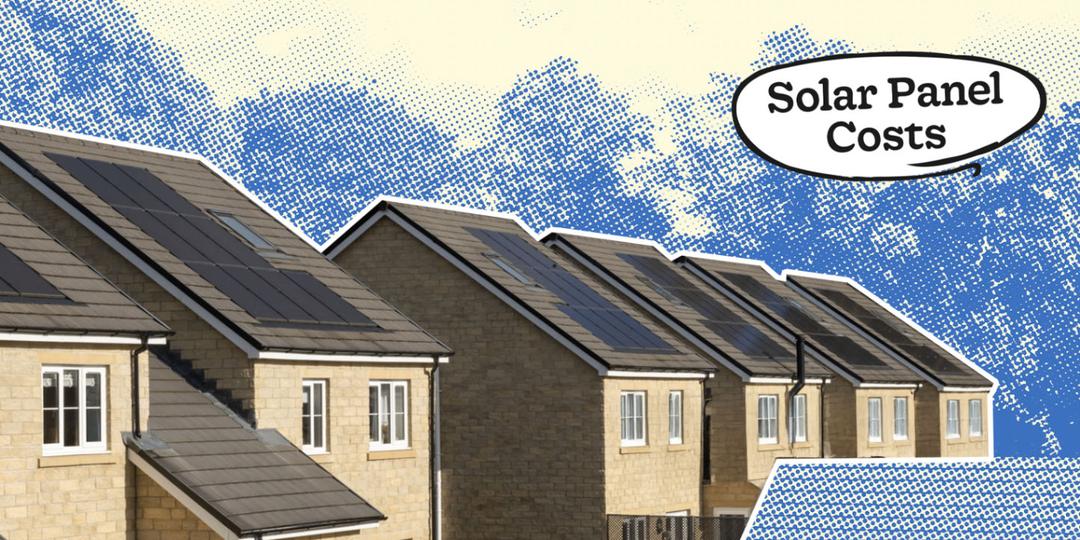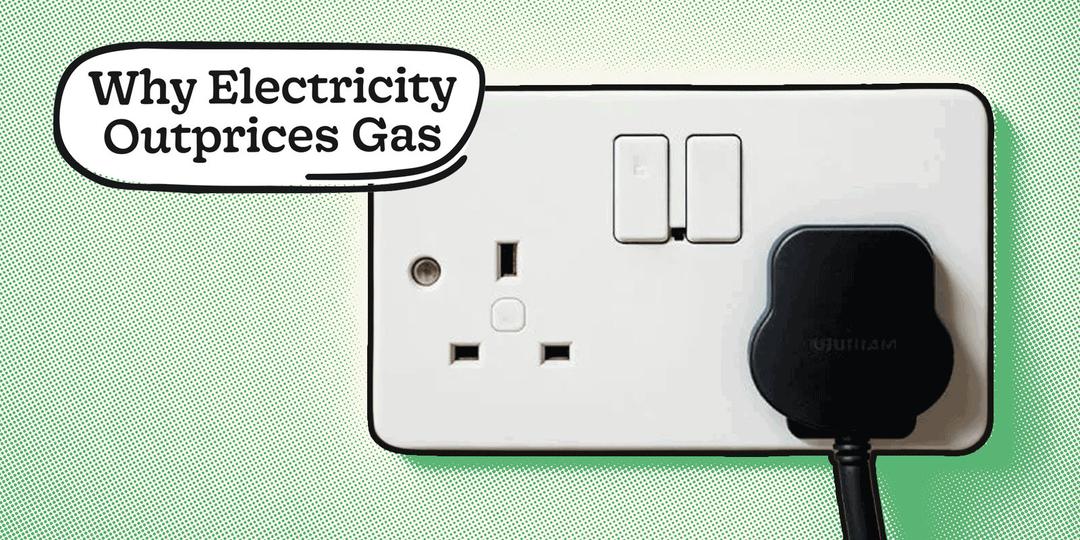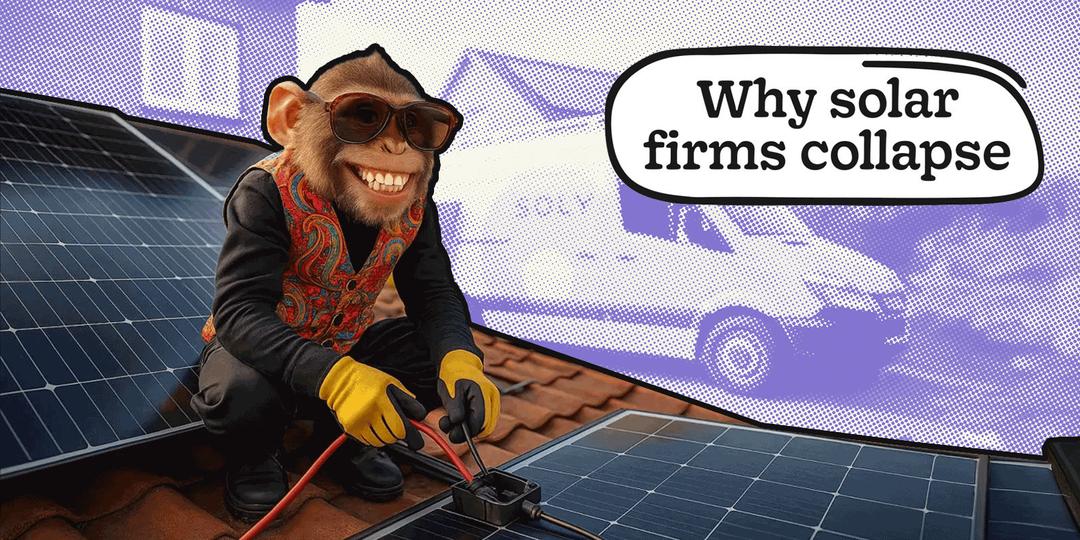Each year, more of the world switches to renewable energy sources to generate clean electricity. In fact, the International Energy Agency (IEA) expects renewable energy to make up roughly 50% of all electricity generation globally by 2030.
Makes total sense to us, as renewable energy sources are better for the planet, cost less than fossil fuels, and are practically unlimited. And when you combine a mix of solar, wind, and hydro power, renewable energy can be every bit as reliable as fossil fuels, without all the pollution.
In this article, we’re explaining the renewable energy facts you’ll want to know. We’ll cover the different types of renewable energy sources, their environmental benefits, how they reduce carbon emissions, and the latest advancements in renewable energy technology.
We’ll mythbust too – renewable energy might be clean, but it’s not always clear when it comes to costs, scalability, and whether it can actually replace fossil fuels for good.
Ready to make the switch to renewable energy yourself? Solar power is the best way to get started and guess what, we’re MCS-certified solar panel installers. Simply answer these questions, get your fixed price, and arrange your free design.
Key Points
Solar energy is the fastest-growing renewable energy source worldwide
The UK is in the top five countries worldwide for wind power generation
Renewable energy works best when multiple sources are mixed together
Solar and wind power are expected to make up 95% of all renewable energy sources by 2030
Hydropower is the largest source of renewable energy in the world.
The Different Types of Renewable Energy
There’s no one single type of renewable energy, rather, it simply means any form of energy that can be used again and again. Unlike fossil fuels, which, once extracted from the ground and burned, are gone for good.
Here are the main types of renewable energy sources currently in action:
Solar Power
The first solar panel was invented in 1883
Solar power doesn’t require direct sunlight to work
Global solar power capacity is 2 terawatts (TW)
Solar power is energy generated by harnessing the sun, and this is done using solar panels. Most people by now will be familiar with what a solar panel is, but just in case you’re not, a solar panel is made from materials that can absorb sunlight and convert it into usable electricity.
There are several different types of solar panels, and advancements are being made in solar panel technology all the time. For good reason,n too, as solar power is up there with one of the best renewable energy sources we have.
It works great when used for homes, but scale it up for commercial installations (solar farms) and it gets even better – the biggest solar farms are capable of powering millions of homes, all without burning or damaging fossil fuels.
Solar power isn’t without its downsides, of course. It only works effectively during the day, and until solar panel efficiency drastically improves, panels take up a lot of space relative to how much power they generate.
A solution to only working during daytime is solar storage batteries, which can capture the energy generated by solar power when the sun is out for use at night, or when the sun isn’t shining bright enough to meet energy needs.
Solar batteries large enough to store power at a commercial level are expensive, however, and all batteries currently have the problem of not lasting as long as solar panels. If you want a solar battery, you’ll need to buy at least two within the lifespan of your solar system.
Finally, recycling solar panels is possible, but a lot of work needs to be done to build up recycling infrastructure to deal with the inevitable surge of solar panel waste in the future.
Pros | Cons |
Free, unlimited source of electricity | Requires a lot of space |
Long lifespan (25-40 years) | High initial cost |
Requires very little maintenance once set up | Weather dependent |
Reduces strain on the grid | Solar battery storage is expensive |
Wind Power
Wind power is up there with solar panels as one of the most recognisable forms of renewable energy, and wind turbines have been a part of the environment for several decades now.
Basically, wind power is electricity generated from wind turning a turbine. As wind turns the turbine, it spins a giant magnet within a coil, generating a current which is used to power homes.
And the best part about wind power is that wind is unlimited and inexhaustible. Once a wind turbine is up and running, it can be left to generate clean electricity with very little input (allowing for occasional maintenance, of course).
Wind power has become the de facto renewable energy source for the UK, making up roughly 28% of all electricity generation (2023 saw wind generate a massive 82.3 TWh). Solar power on the other hand, accounted for just 5% or so of total electricity generated.
It’s a lot cheaper per megawatt hour (MWh) than most fossil fuel projects too. For offshore wind, it costs around £37 per MWh, versus £86 per MWh for coal-powered electricity, and £139 per MWh for nuclear.
Where wind power falters is the simple fact that the wind isn’t always blowing, so you need to combine turbines with a mix of other renewable energy sources. It’s also impractical to install wind turbines in cities and other urban areas, partially because of space, but also because wind flow is usually lower. This means wind turbines are stuck having to send electricity over much larger distances, which can degrade it.
Also, there’s the thorny issue of aesthetics – some people just don’t like the look of wind turbines on the landscape. The counterpoint is, do power stations belching coal-blackened fumes into the atmosphere look better? We’d argue no!
Pros | Cons |
Cheaper to set up than fossil fuels | Wind isn’t always reliable |
Zero carbon emissions | Can impact wildlife such as birds |
Low maintenance | Noise and visual pollution |
Hydro Power
Hydropower is the world’s largest renewable energy source, with a total installed capacity of 1,417 gigawatts (GW) as of 2024. Water is an abundant source of energy, and it’s almost always flowing, giving it an advantage over solar and wind power.
Also, unlike solar and wind power, hydropower can be relied upon to deliver electricity to the grid instantaneously. No need to wait for wind or optimal weather conditions, which is likely why many countries have chosen to develop hydropower first and foremost.
Hydropower’s main downsides are the huge costs required to get hydroelectric power stations up and running. Logistically, building these power stations is incredibly complex, too, with immense engineering challenges involved in blocking off billions of gallons of water.
All this can have a negative impact on the immediate environment, as building hydropower stations increases the risk of droughts and flooding.
There’s the potential side effect of destroying wildlife habitats as well, though modern stations are better at mitigating this through wildlife relocation projects.
Some hydropower stations even have so-called fish lifts, which ‘shoot’ fish through tubes to help them cross safely through the dam.
Pros | Cons |
Constant energy source | Hugely expensive to build |
Provides electricity instantaneously | Increases the risk of droughts and flooding |
Can be used to support irrigation | Can disrupt and displace communities |
Tidal Power
Tidal power uses water, but it’s executed differently from hydropower. Instead, it’s more similar to wind power in that it uses nature to turn turbines to generate clean electricity.
The key advantage over wind power is that water is much denser than wind, so when it flows through a turbine, a lot more energy is produced. Ideally, tidal power could provide substantially more energy than offshore wind farms while using a lot less space.
So why isn’t tidal power more popular? Simply put, it needs specific conditions to work efficiently. The turbines need to be installed not only in coastal locations, but in locations where the tide rises and falls enough to regularly turn the turbines.
And tidal power is very expensive to set up, even when compared to the high costs per MWh of nuclear power – roughly £180 per MWh for tidal power (£139 per MWh for nuclear power).
Finally, it can threaten wildlife, as animals can find themselves entangled in the turbines, and the noise given off by the turbines can disturb certain species. Still, compared to the impact of ocean acidification caused in part by fossil fuel emissions, tidal power is much better for the environment.
Pros | Cons |
Provides a lot of power for the space used | Very expensive to build |
Zero emissions | Needs specific conditions |
Reliable and predictable energy generation | Can harm wildlife |
Biomass
Biomass energy is simply the burning of biological matter, such as wood, plants, and recycled animal waste, to generate power. Despite biomass not being the best-known renewable energy source, it’s more widespread than you might think – there are roughly 225 biomass power plants in the UK, and they generate between 10% and 15% of all our electricity.
In theory, biomass energy is a sustainable loop of burning biomass for electricity, releasing carbon dioxide, which is in turn reabsorbed by plants and trees that will become biomass later down the line.
The problem with this is that you need to guarantee that the plants and trees are absorbing the same amount of carbon emissions released by burning them. Otherwise, biomass energy just becomes another form of pollution.
So you’d need extensive planning to make sure the trees and plants designed to absorb the carbon emissions are planted in time to actually do this.
Pros | Cons |
Can be carbon neutral | It takes decades for trees to become effective carbon sinks |
Reduces landfill waste | Carbon is still emitted |
Biomass is easily accessible | Can exacerbate deforestation |
Renewable Energy Myths
There are loads of myths surrounding renewable energy, but we’re here to give you the truth from the tall tales:
Renewable energy is bad for wildlife
A persistent belief about renewable energy is that it’s bad for wildlife. Misplaced fears about habitats being destroyed, birds flying into wind turbines, and solar farms affecting biodiversity have unfortunately impacted the public’s perception of renewable energy.
The reality is that renewable energy is exponentially better for wildlife than the continued use of fossil fuels.
Also, all renewable energy projects in the UK go through strict planning processes before they can go ahead. Processes that include assessing the potential impact a project might have on nature and conducting thorough biodiversity checks.
Renewable energy projects can actually directly benefit wildlife, such as solar farms. The panels provide shelter for some animals, and wildflowers being left to grow unhindered are great for pollinators.
In the case of wind turbines, yes, a few birds do unfortunately fly into them, but the numbers are unbelievably low compared to the impact of domestic cats – around 100,000 a year for wind turbines, versus an astonishing 27 million for cats. And there’s nowhere near the same level of scepticism shown to renewable energy when it comes to our purrfect pals!
Wind and solar power consume more carbon than they save
One myth we’ve seen doing the rounds is that producing wind turbines and solar panels produces more carbon emissions than they save in their lifetimes. Well, this is categorically false – wind turbines offset the energy used to make them in under a year, and solar panels become carbon neutral after just three years.
Wind turbines and solar panels last 25+ years, so after they both become carbon neutral, they’ll be removing far more carbon from the atmosphere than was emitted during their manufacturing.
Solar panels only work on sunny days
Solar panels might work best when the sun is out and shining, but they don’t suddenly stop working the minute a cloud drifts by. Sunlight still makes it through clouds after all, otherwise every time clouds covered the sky, it’d be like midnight!
Under light cloud cover, solar panels’ ability to generate electricity is reduced by roughly 24%, and around 66% under really heavy cloud cover. So they’ll keep working even in adverse weather conditions, putting to rest the idea that they don’t.
Renewable energy is unreliable
This one gets quite annoying to hear again and again! Usually, people point to either the wind not always blowing or the sun not always shining as proof that renewable energy is unreliable and can’t fully replace fossil fuels.
The problem with this approach is in viewing renewable energy as being from a single source, when in reality, renewable energy is a mix of different sources that compensate when one or more sources aren’t fully available. When there’s not enough sunlight, wind picks up the slack, for example.
There have also been huge advancements in energy storage, which is allowing modern energy systems to overcome the intermittent nature of solar and wind. Massive storage batteries can capture excess energy generated in ideal conditions to be used at a later time.
You can’t recycle solar panels
Naysayers will tell you solar panels, once they’ve reached the end of their lives, can’t be recycled. You’ll hear dark tales of mountains of dead solar panels filling landfills, proving once and for all how evil a technology it really is.
The truth is, however, solar panels can be recycled, and most of the materials they’re made from (such as aluminium, glass, and silicon) can be processed and reused for other purposes.
The silicon might even find its way back into a new solar panel, ready to generate clean, green energy all over again.
A problem, however, is that the industry has a ways to go before it can meet the inevitable demand for solar panel recycling in the future. There are already lots of initiatives working to improve this, and we’re confident that recycling your old solar panels will eventually be as easy as recycling a can of beans!
The transition to renewable energy is too slow to offset climate change
This last one falls firmly into the doom-mongering category and ignores the incredible progress renewable energy has made in the last few years.
Look at global solar power capacity, for example – it reached 2TW in 2024. An impressive feat for sure, but even more so once you consider the fact that the PV industry took from 1954 to 2022 to reach 1TW. We’ve literally doubled solar capacity in two years, so think of what that’ll be in a decade.
The International Energy Agency predicts that by 2026, 95% of the increase in global power will be from renewables, and more than half of that will be solar power. We’re switching to renewable energy faster than a lot of people probably realise.
The Latest Renewable Energy Advancements
Renewable energy is constantly evolving and advancing, unlike fossil fuels, which should be figuratively and literally left in the ground.
For starters, there have been huge advancements in solar panel technology, such as more efficient materials, solar windows that generate electricity, and even the possibility of panels generating energy at night. Another solar development is are so-called “floatovoltaics” – offshore solar farms, basically.
Wind power technology is getting better, too. Recently, a concept for bladeless wind turbines has begun development, which means turbines make less noise, take up less space, and are significantly less harmful to birds and other wildlife.
One of the most interesting developments is in battery storage, which has been dominated by lithium-ion models for years. Now, lithium-ion batteries are still great and will be the standard for some years to come, but lithium-glass batteries represent a big leap. Experiments have shown that these batteries can have three times the storage capacity of lithium-ion batteries, and can charge to full in mere minutes instead of hours.
They’re also capable of at least 12,000 cycles, with a cycle being one complete charge and discharge of a battery. Lithium-glass batteries are made from solid electrolytes too, rather than the liquid of lithium-ion batteries, which, while still very safe, does have a higher risk of fire.
All pretty exciting, right? And is essential in the decarbonisation of our world.
Switch to Renewable Energy With Heatable
Renewable energy is the future, but it’s also the present, and you can get started right now with your own solar panels, which we install!
So, not to toot our own horn, here’s why you should get your solar panels installed with us:
Thousands of Happy Customers: We boast an average score of 4.9 on Trustpilot, outperforming the market leader.
Which? Trusted Trader: Heatable is proudly recognised as a Which? Trusted Trader.
MCS Accredited: Our accreditation by the Microgeneration Certification Scheme (MCS) ensures high-quality standards.
Exclusive Panels: We offer REA Fusion solar panels, available only through Heatable.
Consumer Protection: As members of the HIES consumer code, we provide 2-year deposit protection.
Flexible Payment Options: Choose from multiple payment methods, including finance options.
Fixed Price Guarantee: Enjoy transparency with no hidden costs.
Save Your Quote: You can save your quote and decide later.
Bespoke Design Tool: Draw your own conclusion (literally) on whether solar is worth it for you, here.





